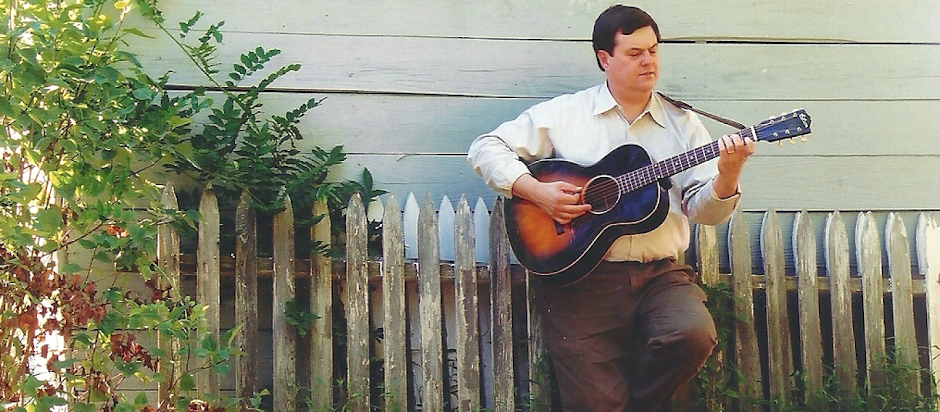Concert Themes
___________________________________________________
My concerts have always combined entertainment, education and mirth.
In a 90-minute concert I sing 18 to 20 great old songs and play three to six vintage acoustic guitars. I tell amusing anecdotes about Tin Pan Alley Artists, Drug Store Cowboys, Stage Door Johnnies or Swing Shift Maisies to introduce the songs. I use a good sound system and quality microphones on guitar and voice so people can hear the music, understand the words and enjoy the program. And after each concert I answer questions on the guitars, the songs, the people who composed them and performers who made them memorable.
My Vintage Music Concerts are not quaint sing-alongs of moon-june-spoon tunes for old folks. Neither are they musical pablum for the mommy-&-me crowd. They're not quick bits of Broadway hits by a saloon singer with a borrowed piano. And they're not glorified Americana by a blue grasser or singer-songwriter posing as a folk singer.
Instead, the music I present is full-bodied American ragtime, jazz and swing laced with a musical, historic or romantic theme that people from all walks of life can relate to. What's more, the guitars I play are from the same era as the songs, so you won't see pick-ups or wires hanging off my instruments. In short, you can't get the concert sound I deliver and you can't have as much fun in public as I do while playing some box with plastic knobs.
In the past decade I'd typically play five or six vintage acoustic guitars and sing 18 to 20 ragtime, jazz and swing tunes from the same year as the guitar. I'd bring a different batch of guitars to each concert and match each song to a guitar's era because that's how it sounded back in the day. To keep things fresh I'd also bring just Martin guitars, or just Gibson guitars, or just mahogany-bodied guitars, or just koa-bodied guitars, or just guitars that once belonged to famous musicians or performers.
No two concert programs were the same and the music was never distorted by pick-ups or wah-wah pedals. I've always kept track of which guitars I played, what songs I sang, how many people were in the audience, how long a program lasted, and what comments an audience made during and after each concert.
But lately I've found some activity directors, lifestyle enrichment coordinators and program planners, including bookers who never attend the concerts they plan, were indifferent to the authentic sound of vintage acoustic guitars, the delight of musical variety and the prospect of creative programming. All they want is someone to sing standards in a familiar theme — a booking method that pushes their square pegs into a performer's round holes at the audience's expense.
So who am I to argue if program planners want specialty programs at my concerts. Here, then, in one place are some of the program themes that have evolved from my concerts in recent years:
In the past decade I'd typically play five or six vintage acoustic guitars and sing 18 to 20 ragtime, jazz and swing tunes from the same year as the guitar. I'd bring a different batch of guitars to each concert and match each song to a guitar's era because that's how it sounded back in the day. To keep things fresh I'd also bring just Martin guitars, or just Gibson guitars, or just mahogany-bodied guitars, or just koa-bodied guitars, or just guitars that once belonged to famous musicians or performers.
No two concert programs were the same and the music was never distorted by pick-ups or wah-wah pedals. I've always kept track of which guitars I played, what songs I sang, how many people were in the audience, how long a program lasted, and what comments an audience made during and after each concert.
But lately I've found some activity directors, lifestyle enrichment coordinators and program planners, including bookers who never attend the concerts they plan, were indifferent to the authentic sound of vintage acoustic guitars, the delight of musical variety and the prospect of creative programming. All they want is someone to sing standards in a familiar theme — a booking method that pushes their square pegs into a performer's round holes at the audience's expense.
So who am I to argue if program planners want specialty programs at my concerts. Here, then, in one place are some of the program themes that have evolved from my concerts in recent years:
• Tin Pan Alley Heroes & Heroines (1912 - 1955)
• Ragtime Rascals (1912 - 1929)
• American Jazz Journey (1918 - 1938)
• Legendary Love Songs (1926 - 1946)
• Hollywood vs. the Depression (1930 - 1940)
• Legendary Love Songs (1926 - 1946)
• Hollywood vs. the Depression (1930 - 1940)
• Radio Ranch (1932 - 1940)
• Soda Shop Swing (1937 - 1947)
• A Fine Romance (1942 - 1956)
• Folk Boomers (1960s)
• No jitterbug. No bebop. No rock'n'roll. No kidding.
_______________________________________
© 2011 Kenneth Lelen - All Rights Reserved
© 2011 Kenneth Lelen - All Rights Reserved
